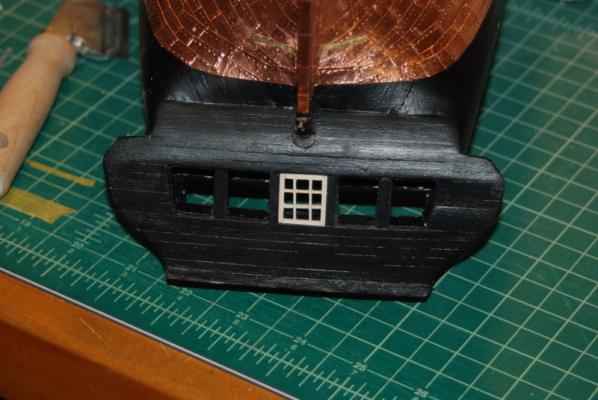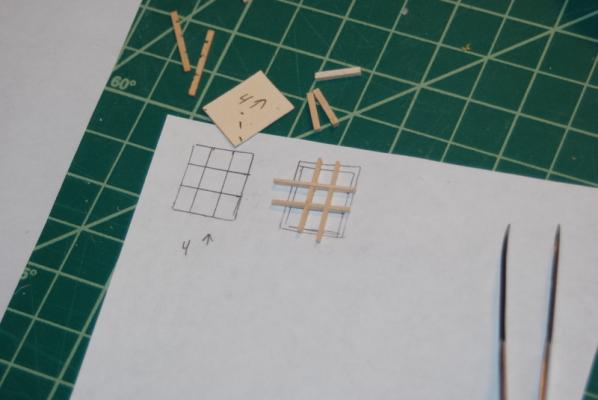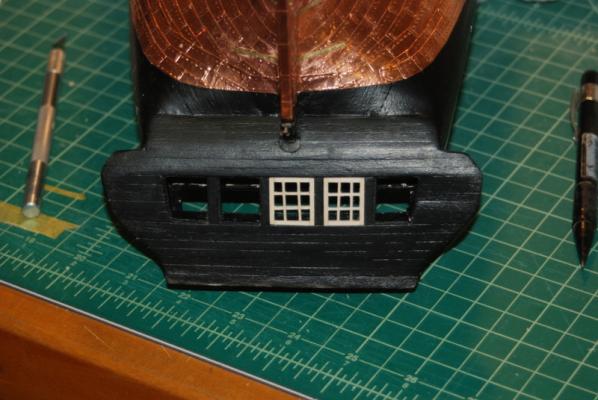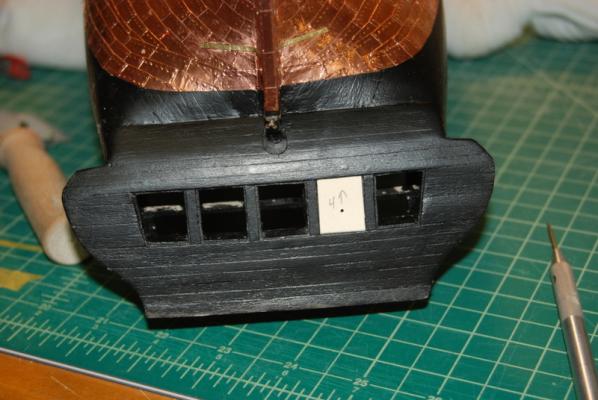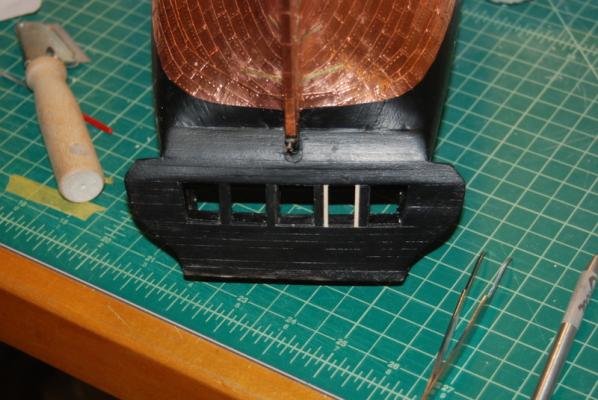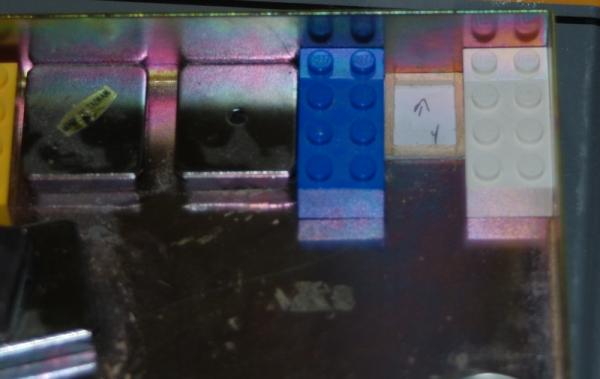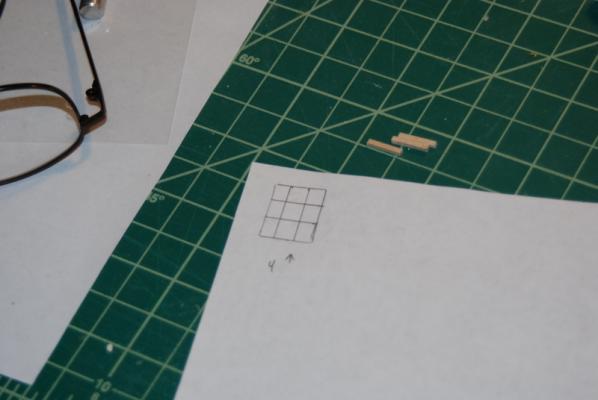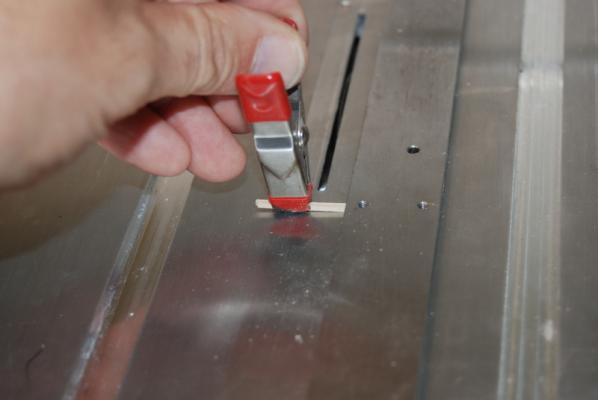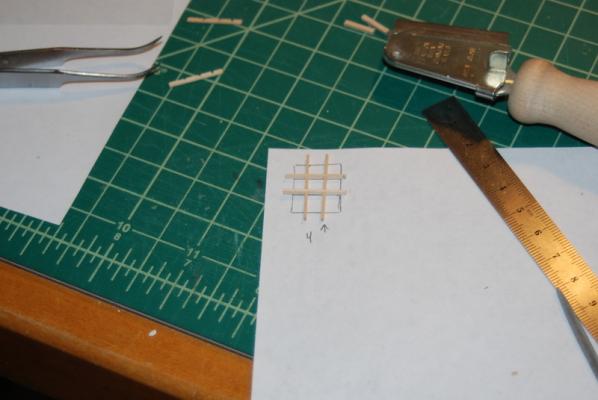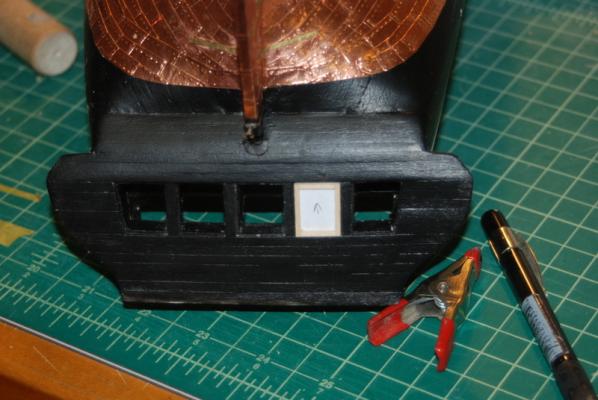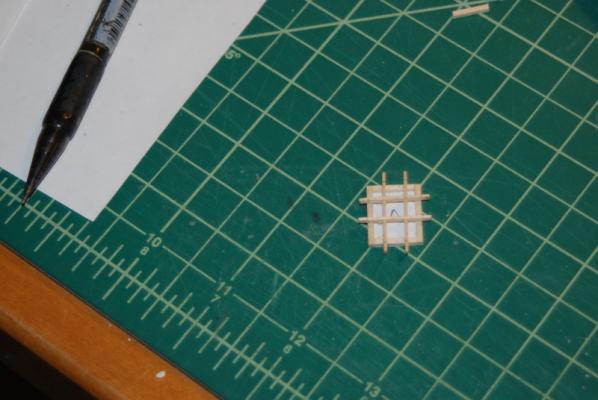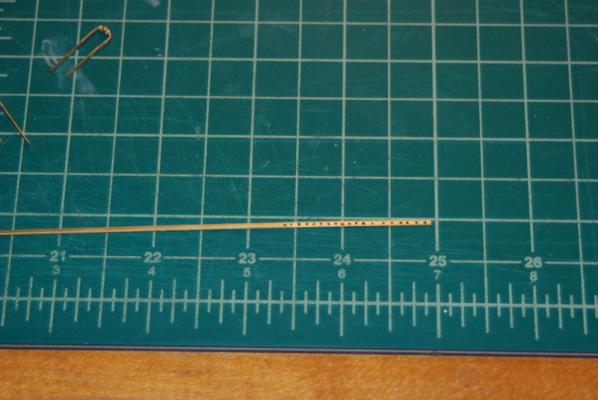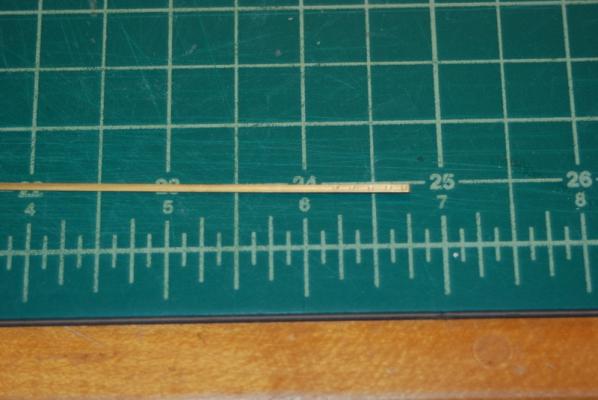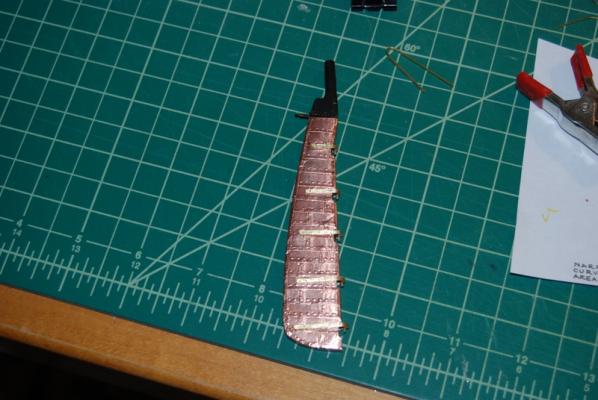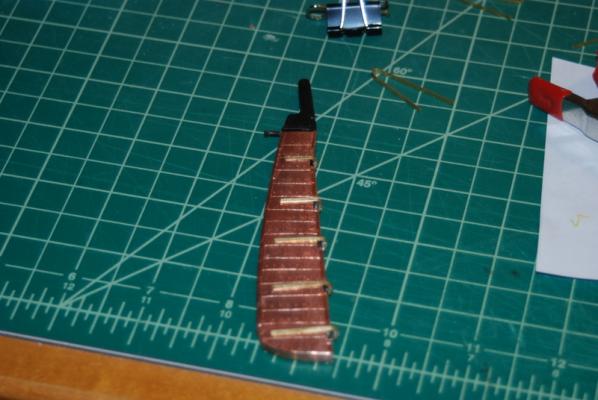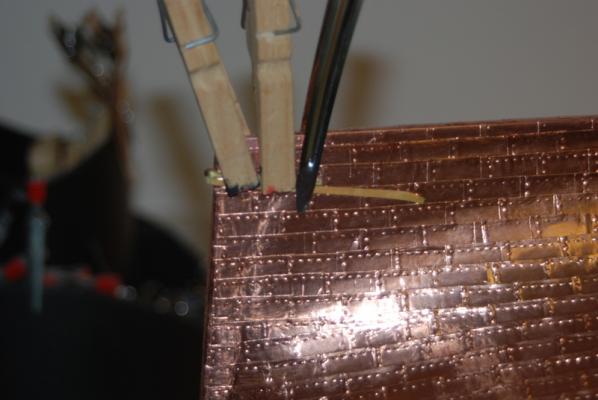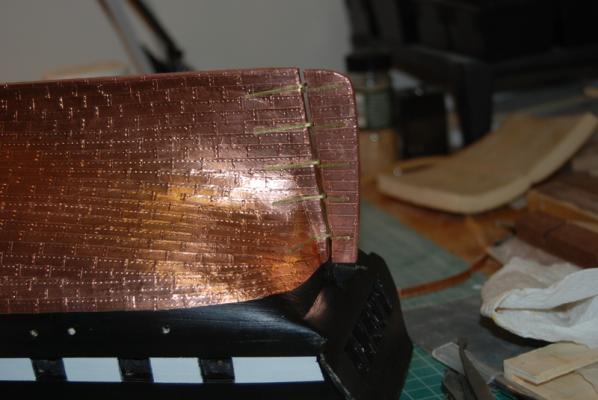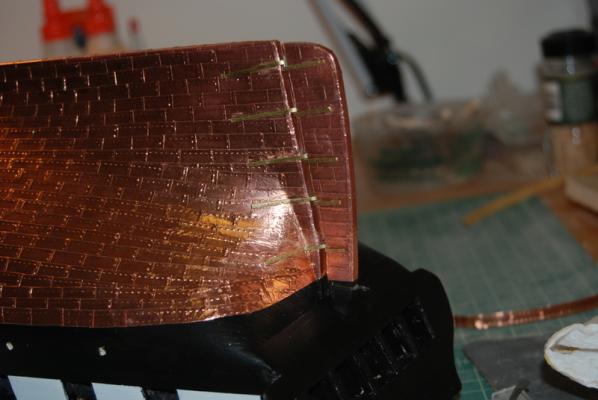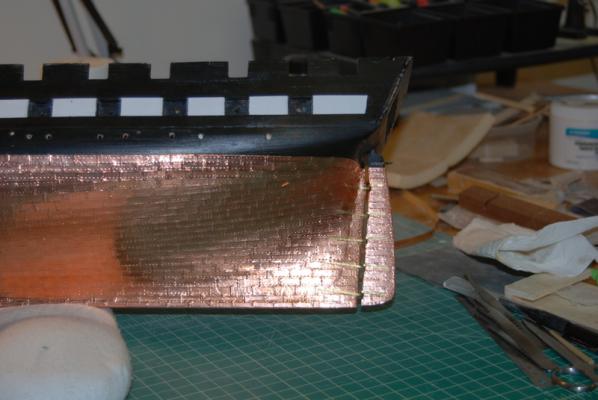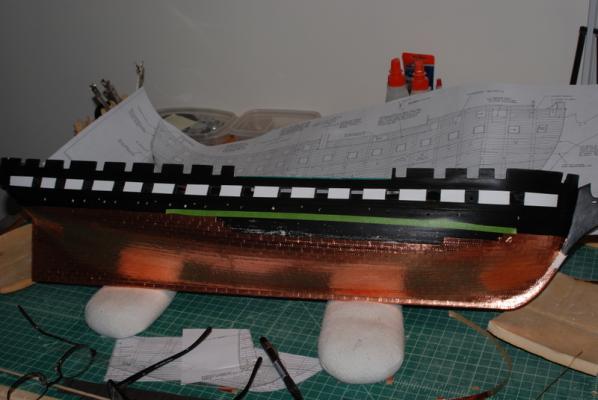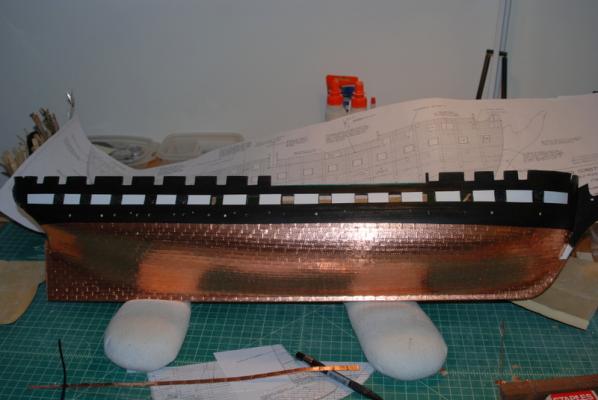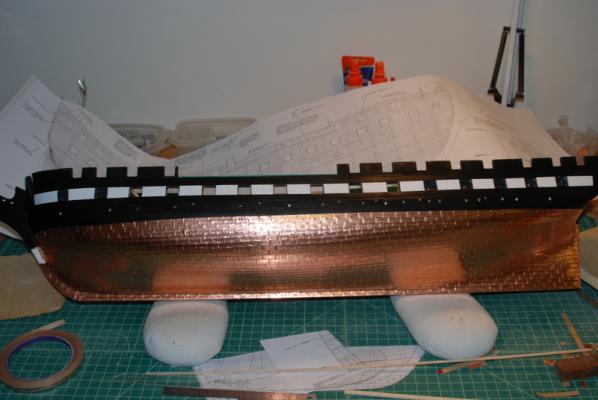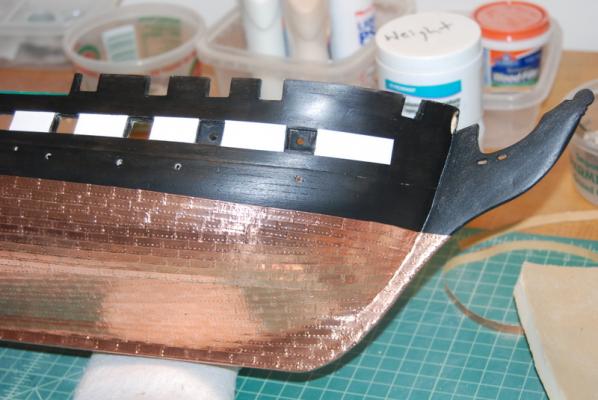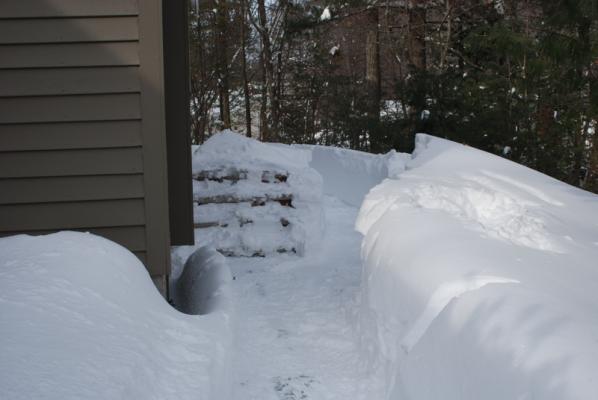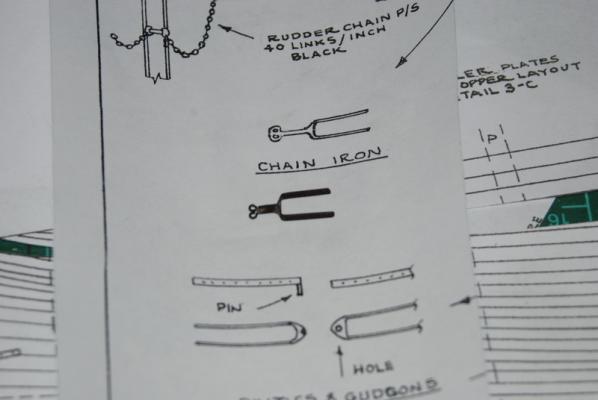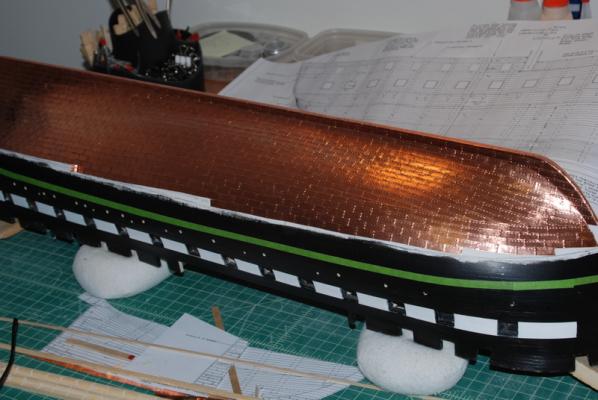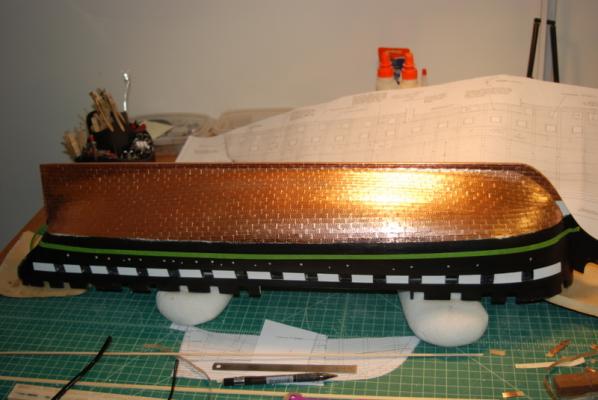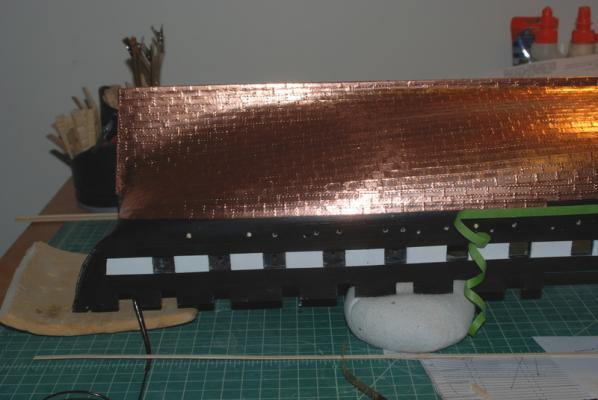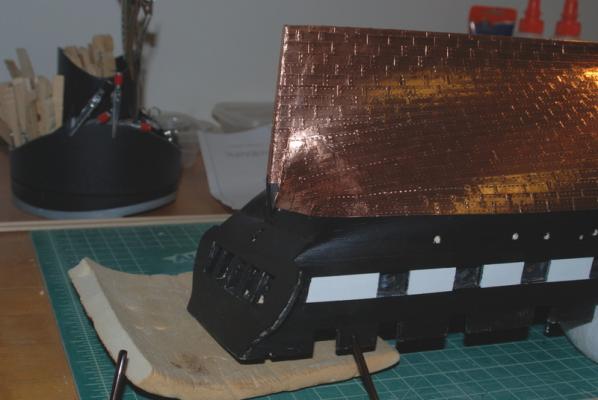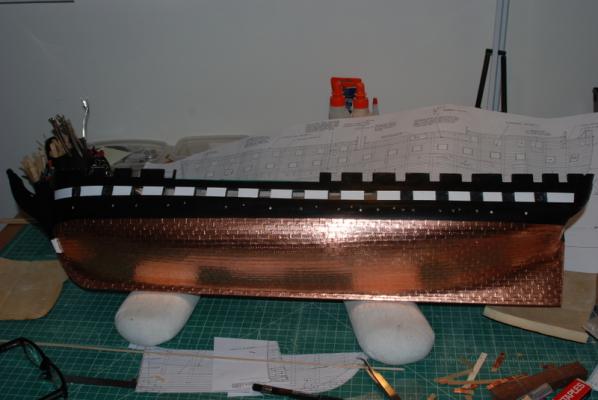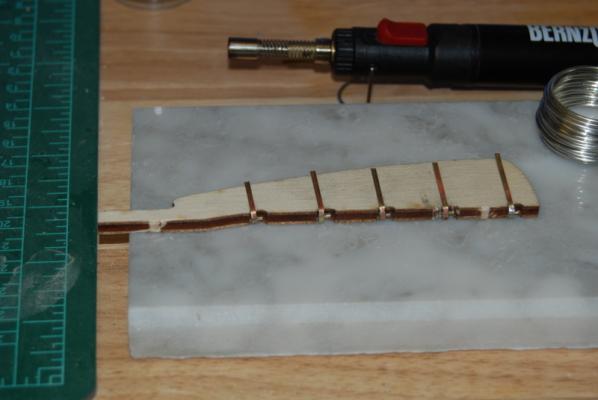-
Posts
2,413 -
Joined
-
Last visited
Content Type
Profiles
Forums
Gallery
Events
Everything posted by usedtosail
-
Thanks Tim. That gluing jig I got from Micro Mark a few years ago, which I find really useful. At first I was not too thrilled with it becuase the magnets are a pain to use, but then I started using the Lego blocks with it which made a huge difference.
- 1,350 replies
-
- constitution
- model shipways
-
(and 1 more)
Tagged with:
-
Here is the remade mullion of the correct size: I trimmed the ends off the mullions and fit it into the window opening, then glued it in. After it dried, I removed the paper from the back of the window, which was easy because it was only glued to the outer frame and I could scrape off any excess glue with an X-Acto knife. I then sanded the front and back by sliding the window over a sheet of sand paper, medium on both sides and fine on the front. And here it is in the opening: Here is the first window I made: And the rest so far: I am finishing up the last window now. I am going to paint these white to match the white trim that I will be putting on the transom. I am pretty please with how these came out, as I have had trouble making similar pieces in the past. The paper backing was the trick for me for these, so I figured I'd share the technique.
- 1,350 replies
-
- constitution
- model shipways
-
(and 1 more)
Tagged with:
-
Thanks guys. Luckily Captain it was only five pintles and gudgeons. The sixth strap is just on the rudder itself so it was breeze to install. Onto the transom. I started by making the window frames and mullions (I think that is what the inner frames are called?). I decided to make the outer frames from 1/16" square wood, as I knew I would have problems using 1/32". I did use 1/32 by 1/16" for the mullions though. I hope the outer frames don't look too thick. I took pictures through the whole process to document how I made them which I will provide here. Since I am completely going away from the plans for the transom, I started by making manila templates of each window opening. I made sure that these were a good fit and did not leave gaps in the openings. I then cut the four outer frames and fit them into the window opening. I then traced the template onto a piece of paper and cut it out to use as a plan for the window. I cut the top flush with the top edge so that I could push this up to the edge of the metal tray that I used to glue these up. This tray comes with magnets to hold parts while gluing and a lip all the way around to push parts up to. I like to use Lego pieces in the tray because they have nicer square edges than the magnets. I removed the outer frame pieces from the opening and put them in the tray on top of the plan. I then glued each piece to the next and to the paper itself. This helped me get the frames square and held them together better for the next steps. While that was drying, I made the mullions. I first traced the template of the window opening onto a piece of paper and divided the sides into thirds. (I bet a bunch of you are screaming at this point - Tom stop! That isn't right!). I then transferred those positions to four pieces of wood for the inner frames. For the first window. I filed notches half way through the strips at those locations, so that they would fit together like a grating. For the rest of the windows, I got brave and used the Brynes saw with a slitting disk to make the notches, which turned out to be a much better way to go. I am using that saw more and more now that I can see what it can do. I used a metal clip as a holder for the strips and held two at a time, which ensured that the notches would be the same for both pieces. I set the fence the correct distance from the blade and made sure the two ends were even to run along the fence. I also made sure the strips were flat to the saw table and not the clip riding on the table. OK, here is how it came out after gluing them together. I put that aside to dry and took the outer frame off the gluing jig, trimmed the excess paper from edges, and fit it to the opening. I had to do a little sanding of the edges to get a nice fit, but this is where the paper backing really helped hold it together as I sanded. And here it is in the opening. And here is where all you guys screaming above were waiting for. I went to fit the mullions to the outer frame and said _ Oh s**t ! I forgot to allow for the outer frame when dividing the window opening into thirds. So, I added the size of the outer frames to the paper and then divided the remaining area into thirds and remade the mullions. Now, this would not be so bad, except I did the same thing on the second window! Duh! Continued in the next post...
- 1,350 replies
-
- constitution
- model shipways
-
(and 1 more)
Tagged with:
-
Good luck with the surgery, Steve.
- 625 replies
-
- bounty launch
- model shipways
-
(and 1 more)
Tagged with:
-
Yes, you could probably work with that. From that last picture, make sure the bottom of the bulkheads make a nice line too. The middle rear ones seem liek they may be too high and not in a nice line. If you added a rabbet at the keel, make sure the bulkheads, except maybe the last one, all end on the rabbet.
-
My advice would be to take some isopropyl alcohol and loosen the glue, then take the bulkheads off and start again. Any discrepancies at this point will be major problems later on. You can get the first chapter of Bob Hunt's practicum for the Constitution at his web site for free. It has some good information about how to make sure the bulkheads are correct before installing.
-
Tim - I like your idea of using Styrene too. I think that should work nicely. Thanks everyone for the likes. I did complete the rudder, for now, and attached it to the hull. I am going to wait to install the rudder chains until later so I don't catch anything on them while I am working on the transom. Here are a couple of tests for simulating the bolt heads in the pintles and gudgeons. I tried dots of black paint and dots of CA. I ended up going with the CA after all, as it really did have the look I was going after - subtle but there. The black was much too pronounced to me. Here is the competed rudder with the pintles glued on and the simulated bolt heads added. I used medium CA to glue the pintles on and in a few of them I had to go back later and add more glue to get the ends to stay down. I found that I could use thin CA with a narrow tube on the bottle, and get just enough on the edge of the pintle to wick into the joint. I used metal binder clips as clamps for the pintles. Then it was time to add the gudgeons. I added these one at a time from the bottom up, since the bottom three where pretty much straight, not crazy bent like the top two. I used the rudder to get them at the right height and angle, but I had to make sure that I could get the pintle to fit over the gudgeon with both the rudder and gedgeon held at the same angle as on the ship, otherwise I would not be able to remove the rudder after gluing each one on. Getting the top two gudgeons to fit nicely took a while and they are not exactly right, but I can live with them. These were especially hard because there is no good way to clamp them, so I mostly just did each side separately and held them with some piece of wood by hand until the (medium) CA dried. You can see in the picture below that I used a thin strip of masking tape to mark the height and angle of the gudgeon before I glued it on so that when I applied the glue I could get it in roughly the right place and still have time to place the rudder in this gudgeon and the previously added gudgeons to get the final location. A couple of times I had to go back and reapply the glue because I didn't get the rudder in place in time. And here is the final result, with the CA spots to simulate the bolt heads on the gudgeons and chain iron too. What is hard to see in these pictures is that I also added a piece of manila folder that I cut to fit over the rudder hole in the counter with a hole in it for the rudder post, to simulate a rudder coat. I slipped this over the rudder post before the rudder was installed and then slid it to the counter and glued it on with white glue, then painted it black. It covered the odd size rudder hole nicely. I tried other things to make the rudder coat out of, like foil and even Sculpey, but I liked the simple look of the folder material the best. Now it is time to work on the transom, so framing the windows will be next.
- 1,350 replies
-
- constitution
- model shipways
-
(and 1 more)
Tagged with:
-
All I can say is Wow! That is a museum piece.
- 335 replies
-
- Constitution
- Mamoli
-
(and 3 more)
Tagged with:
-
Another beautiful theory killed by an ugly fact. Thanks Mark for setting me straight. Sjors, she looks magnificent whichever way the chimney is shown.
- 1,616 replies
-
- caldercraft
- agamemnon
-
(and 1 more)
Tagged with:
-
Thanks George, Nenad, Tim, and Captain Steve. Humm, that sounds like an interesting idea, Captain Steve. I may try that out. I was hoping to avoid drilling tiny holes in the brass, but I may have to try. I did try just putting spots of black paint on the brass strip last night, but I am not satisfied with that look.
- 1,350 replies
-
- constitution
- model shipways
-
(and 1 more)
Tagged with:
-
Thanks everyone. Well, I finished copper plating the starboard side, but something was not right. When I turned the hull over so it was right side up, it looked like the copper plates did not come up high enough in the second quarter of the hull. So, I remeasured the top of the copper plate line from the bottom of the gun ports and sure enough it was low in that area. I marked the correct line with masking tape then removed plates down to the top row of the second gore. There were partial plates here that I removed and replaced with full plates, then put the three dressing rows back in those areas. I turned the hull around and did the same on the other side Then completed the plates around the stem and stern post. I will copper plate the rudder tonight. I still have not decided how to represent the nail heads on the pintles and gudgeons. They look pretty small on the plans and I am not sure I could drill small enough holes through the brass strips to use real nails or wire. In the past I would just use small drops of CA to simulate the heads, but these were on P&Gs that were painted black. I want to leave these bright brass. I will be doing more experimentation before I decide, but any suggestions are welcome.
- 1,350 replies
-
- constitution
- model shipways
-
(and 1 more)
Tagged with:
-
Sjors, I do believe that these chimneys did swivel, at least on some ships. For instance, if the ship were swinging on its anchor, the wind would be blowing right down the chimney if it faced forward. Maybe one of our history experts can verify this.
- 1,616 replies
-
- caldercraft
- agamemnon
-
(and 1 more)
Tagged with:
-
PDF will be fine. I am no CAD guy. I'll send you my email in a PM. Thanks again.
- 335 replies
-
- Constitution
- Mamoli
-
(and 3 more)
Tagged with:
-
Yes, I forgot yours is a different scale. It should scale up OK I think. I would love a copy of your plans, but there is no rush, as I probably have another year at least before I am to the point of developing the case. Thanks so much.
- 335 replies
-
- Constitution
- Mamoli
-
(and 3 more)
Tagged with:
-
Bill, that is a great case design. I am going to use some of it when I build a case for my Connie, if you don't mind.
- 335 replies
-
- Constitution
- Mamoli
-
(and 3 more)
Tagged with:
-
One more thing I forgot to include in my last up-date. Here is the most useful modeling tool I have been using lately. My old snow blower of 25 years died just before the blizzard last month and I was fortunate to find this one in Home Depot the next day. It has been the most useful modeling tool because it has gotten me back to modeling in half the time of the old snow blower. I actually had to snow blow a path around the house yesterday so the oil delivery guy could get to the filler tube. First time I ever had to do that.
- 1,350 replies
-
- constitution
- model shipways
-
(and 1 more)
Tagged with:
-
Thanks guys. George, I find the adhesive very good on the copper tape. There is quite a bit of resistance when removing plates. I know it is not a definitive test, but I do have models that are seven years old with no sign of any plates coming loose. I usually burnish the plates down using a piece of wood, but because these plates have the raised bumps, I just use my fingers to smooth them down after they are applied.
- 1,350 replies
-
- constitution
- model shipways
-
(and 1 more)
Tagged with:
-
Yeah, George, my kit is only a few years old. I am not sure when they started adding the replacement parts. After the pintles and gudgeons, I made the chain iron. I used a piece of brass tubing that I soldered two eye bolts in one end. I bent the eye bolts so they both fit side by side before soldering them. I cleaned up the excess solder then cut the tube to length and filed the end flat. I bent the same brass strip as I used for the P&Gs and then soldered it to the brass tube. Since this piece goes on the black part of the rudder, I cleaned it up a bit then put it into some Brass Black to see what would happen. The silver solder blackened nicely, as did the brass, so I was very happy. It was then time to get back to the copper sheathing, since all the paint had been applied, including the area around the rudder hole. I first marked out the top edge of the of the final line of plates using masking tape, which I made sure was absolutely straight. It showed that I had some areas that were more than 3 rows wide to complete. So, I took off the trimmed plates from the last two rows of plates in the previous section and left the full width plates. I left the plates at the back of the rows up so that I could slip the new plates under them. I then marked down from the final edge for each row of the dressing belt plates, which showed the gore line at the top edge of the previous belt. I filled in the rows with whole and partial plates to the new gore line. I then completed the three dressing belt rows. I did start the bottom dressing belt at the stern post, instead of near the turn of the stern that the plans show, so I trimmed off some plates from the previous belt there. I also used smaller plates around the sharp turn at the stern to make the curve look better. As I added the plates in the final row, I matched them up with the edge of the masking tape, and pulled back the tape as I went along, to make sure no plates were over the edge of the tape and to check the edge for straightness. I was really pleased with how straight the edge came out. I have since transferred the top edge of the plates to the starboard side and marked it with masking tape, but have not started removing and adding plates yet.
- 1,350 replies
-
- constitution
- model shipways
-
(and 1 more)
Tagged with:
-
Thanks guys. George, in my kit there was a section of laser cut parts with a sticker on it that said to not use them and use the replacement parts on another laser cut sheet. These included the rudder and the two end transom support pieces, and maybe a couple of other parts.
- 1,350 replies
-
- constitution
- model shipways
-
(and 1 more)
Tagged with:
-

Cutty Sark by NenadM
usedtosail replied to NenadM's topic in - Build logs for subjects built 1851 - 1900
Me too. Nice job.- 4,152 replies
-
- cutty sark
- tehnodidakta
-
(and 1 more)
Tagged with:
-
Thanks George and for all the likes. While I have been painting the black down further on the hull, I started on the next task, which is the rudder. I want to make this now so that the cooper tape will oxidize the same as the tape on the hull. This is another little tip I learned on this site from a previous Connie builder, I think from Modeler12. I cleaned up the supplied rudder which comes as a laser cut piece. Actually, two rudders are supplied but we are told to not use one of them. I found this extra rudder to be very helpful as you will see. After I cleaned off the burn marks, I sanded the rudder post round and test fit it into the rudder hole, which of course was too small. Really, it was the wrong shape, as it was round in the plane of the counter but the rudder post fits in at about a 45 degree angle to that plane, so the hole really needs to be an ellipse, not a circle. I used some drill bits and a rat tail file to get the shape right until the rudder post fit in the hole. In the process I did a little damage to the counter, so I added some wood filler and sanded it down to the surface. I gave the rudder a good sanding and a coat of primer. I then painted the top portion of the rudder and the area around the rudder hole with a few coats of black paint. I also painted inside the cut outs for the pintles with black paint, as I am not sure I will put copper foil inside these areas. In between coats of paint I made the pintles and gudgeons. To make the pintles, I used the spare rudder to bend the supplied copper strips. I bent these so the U shape was a little wider than the rudder, then gently squeezed the pintle on the rudder. This put a bend in the short side of the U that I could fit the pin into. I cut the pins from some brass rod and silver soldered them into the U part of the pintles. I have not had much success with silver soldering in the past, but I bought some new solder (Stay-Bright) that worked a treat. It comes with a bottle of liquid flux. I put the flux on both pieces and cut a small piece of solder which I placed inside the U. I held the rod in the U and heated the pieces with a micro torch until the solder melted. I did this on a piece of marble threshold that I had. In most cases the rod was not perfectly straight in the pintle, so I draped the pintle over the marble with the rod on the marble and reheated the joint, so the pintle would hang straight when the solder melted. I cut the rod to size and cleaned up the pintles with a file and sand paper. I am going to leave these bright on the rudder. I made the gudgeans by just bending the brass strip on the extra rudder, but these will get their final shape when I attach them to the hull. Here are the pintles on the spare rudder: I still need to cut the ends of the pintles to length, but I will do that when I attach them to the rudder. Once the black paint dries on the hull, I will be adding the last three rows of copper plates, the dressing belt. Then I will copper plate the rudder.
- 1,350 replies
-
- constitution
- model shipways
-
(and 1 more)
Tagged with:
About us
Modelshipworld - Advancing Ship Modeling through Research
SSL Secured
Your security is important for us so this Website is SSL-Secured
NRG Mailing Address
Nautical Research Guild
237 South Lincoln Street
Westmont IL, 60559-1917
Model Ship World ® and the MSW logo are Registered Trademarks, and belong to the Nautical Research Guild (United States Patent and Trademark Office: No. 6,929,264 & No. 6,929,274, registered Dec. 20, 2022)
Helpful Links
About the NRG
If you enjoy building ship models that are historically accurate as well as beautiful, then The Nautical Research Guild (NRG) is just right for you.
The Guild is a non-profit educational organization whose mission is to “Advance Ship Modeling Through Research”. We provide support to our members in their efforts to raise the quality of their model ships.
The Nautical Research Guild has published our world-renowned quarterly magazine, The Nautical Research Journal, since 1955. The pages of the Journal are full of articles by accomplished ship modelers who show you how they create those exquisite details on their models, and by maritime historians who show you the correct details to build. The Journal is available in both print and digital editions. Go to the NRG web site (www.thenrg.org) to download a complimentary digital copy of the Journal. The NRG also publishes plan sets, books and compilations of back issues of the Journal and the former Ships in Scale and Model Ship Builder magazines.



